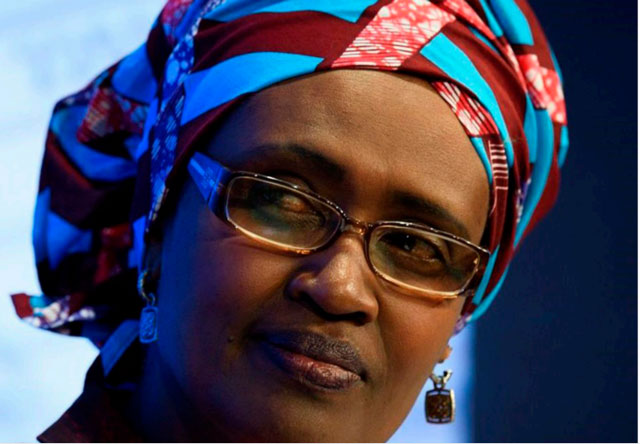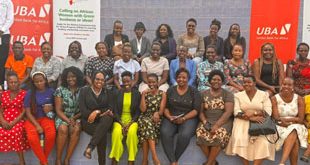
On Jan.27, Winnie Byanyima, the Executive Director of UNAIDS, the Joint United Nations Programme on HIV/AIDS, spoke during the opening plenary at this year’s virtual HIV Research for Prevention (HIV R4P) Conference. Byanyima who spoke under the theme, “Where will we be in 2025?” detailed plans for a new UNAIDS strategy that is aimed at closing inequalities that are behind the unrelenting HIV infections especially in Sub-Saharan Africa. The Independent’s Ronald Musoke attended the conference and captured Byanyima’s thoughts.
This year, 2021, is of particular significance (to the global community) as it marks the 40th anniversary since the first reported cases of HIV. Forty years on, the fight is far from over.
Last year, we saw 1.7 million new infections and 690,000 AIDS-related deaths. Still, it was the lowest number of HIV infections recorded since 1989 and the reduction in mortality is indeed historic, but let us not be so complacent that 1.7 million new infections per year starts to feel like progress and when every one of those AIDS-related deaths was preventable.
The truth is that we are failing. We have missed our target for 2020 by a wide margin and we need a wake-up call to get back on track to end AIDS by 2030. Where we will be on HIV prevention in four year’s time (2025) depends on the choices we make now.
Dr. Anthony Fauci (the Director of the U.S-based National Institute of Allergy and Infectious Diseases) has so eloquently shown how COVID-19 has highlighted the fragility of our progress in the HIV response.
COVID-19 has also shown that a shared sense of outrage, urgency and solidarity can transform challenges that normally require years into solutions delivered in months or even weeks.
Today, we have more tools than ever before to control the HIV epidemic—even in the absence of a vaccine or a cure for HIV. In that light, why haven’t we seen the transformation we need for HIV prevention? I could highlight a number of gaps and shortcomings but today I will focus on only one: Inequalities.
We will never end AIDS if we do not make HIV prevention a renewed urgent priority nor will we succeed if communities are not the front and centre of our responses.
The science being presented at this conference is truly remarkable. New technologies; from more potent alternatives for oral PrEP (Pre-Exposure Prophylaxis) to the long acting injectables to make adherence to PrEP easier to the very promising broadly neutralizing antibody studies that could take us closer to an HIV vaccine.
But prevention technology means little if people cannot have access to prevention; prevention technology means little to those people who feel prevention cannot work for them. The gaps in HIV prevention continue to be driven by profound inequalities that leave the most vulnerable behind.
An inequality lense reminds us that prevention is working for some people. For general populations in much of the world today, HIV infection is rare. HIV incidence rates are falling in some countries by over 50% in a country like Eswatini (formerly Swaziland) and by over 60% in Thailand and Vietnam and even for some key populations, we have seen remarkable progress.
HIV rates among gay men in London, for example, have fallen dramatically in recent years. So what is working for some? They can access health care without discrimination. They have affordable access to the very best technologies and significant funding has been put behind community groups to deliver services and rights. We can do that for everyone.
So, we at UNAIDS are focusing more and more on this nexus—science and rights— to secure for the rest what has been possible for the few. We can close these inequalities and when we do, we will halt AIDS.
Infections remain high among African young women
Our data shows that new HIV infections fell worldwide between 2010 and 2019 but globally, among people who inject drugs, female sex workers and transgender women, it barely changed. Among gay men and other men who have sex with men, HIV incidence increased by 25%.
We must respond with rights and science. On science, the very first people to get new injectables and better PrEP at scale should be key populations in the Global South. Let us make this happen. On rights, let us put serious effort into decriminalization and, (while) on the way there, into reducing enforcement so people can access prevention services freely and live their lives in ways that reduce risk to them.
In 2019, adolescent girls and young women in Sub-Saharan Africa represented a quarter of all new infections. This alarming epidemic is fueled by gender inequalities, social norms and structures that magnify risk to HIV. We have the highest rates of child marriage and adolescent child-bearing in the world in Sub-Saharan Africa and unacceptable levels of intimate partner sexual violence.
We must respond with science and with rights. On science, we can prioritize free and easy access to the newest prevention tools for young women and girls. We can remove policies that say that only some people can access PrEP. We can end demonstration projects and give young women and girls a true range of options. They will show us what works for them.
On rights, 34 million girls in Sub-Saharan Africa are not in secondary school even before the disruption caused by COVID-19. Yet we know that a full round of secondary education reduces the HIV risk to girls by 50%. Let us offer every girl an excellent education and build community organizations to help them realize their rights.
We will never end AIDS if we do not make HIV prevention a renewed urgent priority nor will we succeed if communities are not the front and centre of our responses.
From the early days in New York and San Francisco, in Johannesburg and Kampala, in Bangkok and Mumbai, it is the activists in the communities that have led; people living with HIV, women, gay men, sex workers, transgender people and people who use drugs, they organized their communities and claimed their rights.
They have demanded and they have received cutting edge science. There is reason therefore to be hopeful. We know what leads to success even amongst the lowest income countries and most affected populations. We at UNAIDS, are setting our new strategy to close the inequalities that drive HIV so that we can end AIDS by 2030.
For HIV prevention, the new more ambitious overarching target is that 95% of people at risk of HIV infection use combination prevention by 2025, defined with detailed thresholds for each vulnerable population group to identify and close the inequalities.
And for the first time, we propose targets for establishing supportive legal and policy environments—an inequality frame with access to justice, gender equality and of freedom from stigma and discrimination.
Our modelling has shown that if our targets aimed at promoting favourable societal environments are met, 440,000 AIDS-related deaths will be averted and 2.6 million additional new infections would be prevented. Indeed achieving the 2025 targets would change the trajectory of the HIV epidemic and put all the regions on a path to ending AIDS by 2030.
None of this is easy. We need to strengthen the global architecture for HIV prevention. The Global HIV Prevention Coalition and the Global Partnership to End Stigma and Discrimination are both co-convened by UNAIDS and we need them to be even more effective in the next five years.
As we mark the start of the New Year, let us dig deep and get ready to work. I am humbled to stand side by side with you and to refocus our efforts for HIV prevention together.
 The Independent Uganda: You get the Truth we Pay the Price
The Independent Uganda: You get the Truth we Pay the Price



“Among gay men and other men who have sex with men, HIV incidence increased by 25%.”
This would be sufficient ground for homophobic Uganda to criminalize homosexuality. That’s one of the tools of prevention. They should also criminalize polygyny. The other alternative is for everyone to get truly born-again and follow the bible because it says that no homosexual or fornicators and adulterers will enter the kingdom of God or heaven. Failure to do the above, there is no effort worth its salt that can change any of the sexual behaviours of an adulterous and immoral generation. In fact, UN agencies never solve anything. They can only try, but it is all in vain. In some cases, they encourage the issues then purport to solve them.
“We need to strengthen the global architecture for HIV prevention.”
What does such jargon mean to the ordinary person, perhaps living in the slums of Kampala, or other places where poor people live and are ravaged by all sorts of diseases? It is all superficial and does not impact them in any way.